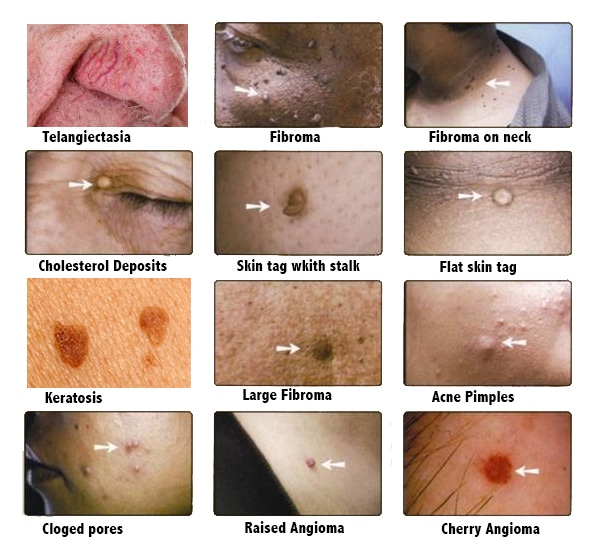
September 16, 2024
Moles & Benign Skin Growths Types, Dangers
Benign Mole: Types, Causes And Removal Treatmets When every couple of months, states Dr. Jih, stand in front of an unabridged mirror and evaluate the moles on your skin while asking yourself these ABCDEs. Fortunately is that very early discovery of cancer malignancy brings about significant survival benefits. The 10-year survival rate for cancer malignancy that is identified early is 93 percent. If you have a mole that changes, particularly one that satisfies several of the criteria in the ABCDE overview over, see a medical professional immediately. Moles that become cancers cells can all look really different. Some may reveal every one of the adjustments listed above, while others might have only one or 2 unusual attributes.Register For Our Blog
Concerned About A Mole? Here’s What You Need To Know, According To An Expert - British Vogue
Concerned About A Mole? Here’s What You Need To Know, According To An Expert.
Posted: Sun, 15 Aug 2021 07:00:00 GMT [source]
- The source of a new mole that appears in the adult years isn't well comprehended.
- When the skin is subjected to UV rays, melanocytes produce a protective, skin-darkening, pigment called melanin.
- These moles are a little most likely to turn into cancer malignancy (cancer cells) than are moles that show up after birth.
- Changes in moles may need a see to a medical professional to establish if the mole is displaying dysplasia, i.e. ending up being dysplastic.
- Bigger skin tags are usually best gotten rid of by trimming them off with a medical blade.
How Should I Analyze My Skin For Moles?
Moles may alter in appearance in time and some might also vanish with age. They may contain hairs or become elevated or wrinkled. Speak to your medical professional concerning any modification in the color or dimension of a mole or if itching, pain, hemorrhaging or swelling establishes. Many moles expand on components of your body that obtain sunshine (ultraviolet radiation). You may see that you obtain even more moles the longer you remain in the sun.Maintaining Your Moles Healthy
Analyze your skin with a mirror or ask someone to assist you. Pay special focus to locations of the skin that are usually revealed to the sun, such as the hands, arms, chest, neck, face, ears, legs, and back. A lot of moles appear in early childhood and during the initial 25 years of an individual's life. It is typical to have between 10 and 40 moles by adulthood. A skin tag is a little flap of cells that hangs off the skin by an attaching stalk. They are generally located on the neck, chest, back, armpits, under the breasts, or in the groin location. This treatment is accomplished to guarantee that any melanoma-containing cells are eliminated in their entirety, avoiding cancer malignancy from spreading in other places in the body. Seborrheic keratoses are brown or black developments usually located on the breast and back, along with on the head. As they create, seborrheic keratoses tackle a warty appearance. These are just a few of the myriad of benign skin developments that may be seen on skin test of a number of our clients at SkinCare Physicians. If you observe any new or changing sore on your skin, please call our workplace for an examination. During pregnancy, as an example, a lady's moles may end up being larger and darker or undertake other changes. Though this doesn't constantly indicate an issue, it is best to have any type of mole that's changing evaluated. Moles are collections of melanocytes, which are the cells that create and provide your skin its pigment. All skin kinds-- despite just how fair or dark-- have melanocytes as a regular part of the skin. They might ask you if they can take a picture of it to send to a professional (dermatologist) to look at. If a skin doctor believes a melanocytic mole requires to be evaluated even more to discover whether it is cancerous, they will certainly perform a biopsy. This entails shaving or cutting it out so that it can be examined under the microscopic lense. Cancerous moles, additionally known as deadly moles, vary significantly in just how they look. If you discover changes in a mole's color, elevation, dimension, or form, you ought to have a skin specialist (skin doctor) evaluate it. You additionally must have moles examined if they bleed, ooze, itch, or become tender or unpleasant. A typical mole is typically smaller sized than concerning 5 millimeters wide (concerning 1/4 inch, the width of a pencil eraser). It is rounded or oblong, has a smooth surface area with a distinctive side, and is typically dome-shaped. Blemishes are triggered by a hereditary tendency to generate more melanin, the pigment that offers skin its color. When skin is revealed to the sunlight, blemishes will certainly end up being darker. We are devoted to assisting you keep healthy skin at Valley Skin Institute. Please call us if you see any type of changes in your moles or have any concerns. Our group of professionals is below to give individualized guidance and treatment to guarantee your skin stays Benign skin growths healthy and balanced. Atypical moles have the possible to end up being malignant. Just like several medical problems, family history counts. If a close blood relative had cancer malignancy, you're at threat, as well. Experienced skin specialist, Vicki Rapaport, MD, of Rapaport Dermatology in Beverly Hillsides, California, desires you to recognize the indications of cancer malignancy. She recommends checking your moles monthly as component of your basic self-care regimen and getting an annual skin cancer cells screening. Cancer malignancy is a sort of skin cancer that begins in melanocytes. It is potentially hazardous because it can get into nearby tissues and spread to other components of the body, such as the lung, liver, bone, or mind.What changes to be concerned concerning a mole?
Social Links